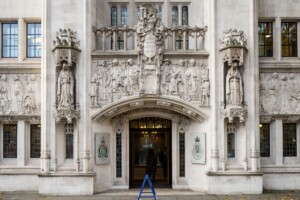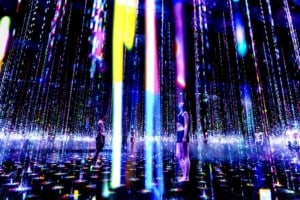 By Peter Ed.
By Peter Ed.
Related: Audiovisual technology: A short history of the videowall / Aspects of EXPO 2010 -an Audiovisual Review / Rise of the MBAs (Media Based Attractions) :The next generation of entertainment experiences / Making (Audiovisual) Waves at Disney
The Light Emitting Diode has travelled far since 1962 when the first red LED saw the light of day. Used as indicators and in early calculators, more and more LED colours were developed, with the last step, the blue LED, invented in 1993.
With the combination of red, green and blue LEDs and with the ability to control each LED colour separately, a whole new palette of colours could be produced. Lovely, but not practical, for the LEDs were only small, and not very bright.
Power and Saving
LEDs have a number of essential characteristics that come to result in huge research and  development investment programmes around the world. Being a ‘point source’, it is possible to perform a variety of optical tasks. Being solid state, it will last for a much longer than any comparable light source. Light weight – well, where do you want it?
development investment programmes around the world. Being a ‘point source’, it is possible to perform a variety of optical tasks. Being solid state, it will last for a much longer than any comparable light source. Light weight – well, where do you want it?
Perhaps one of the real drivers for the speed of market adoption is its lighting efficiency in terms of Lumens per Watt. The use of LEDs as a lighting tool has recently become ubiquitous in traffic lights, car headlights, torches, desk and reading lights and even in decorative architectural lighting instruments. The use of LEDs for household lighting is not far off an economic reality.
Imagine Imagery
A different track the LED has taken, is by using digital processing to exactly control the power into each of the RGB LEDs. Pack the RGB LEDs in a tight array as video pixels, and you get a powerful and large video screen that can be seen at a distance even in daylight.
 Incredibly expensive, the first uses were seen at arena sized rock concerts, and today you can’t avoid seeing them showing advertising in most city centres.
Incredibly expensive, the first uses were seen at arena sized rock concerts, and today you can’t avoid seeing them showing advertising in most city centres.
Unfettered low resolution
It didn’t take long for designers to realise that the LED pixel did not have to be restricted to the limitations of a ‘normal’ video screen, bound by a frame, but could be any size the budget would stretch to! The 1997 U2 tour Popmart, featured a 50m wide and 15m high ‘exploded television screen’, and in Shibuya, Tokyo, the world saw its first LED façade video screen on the Taiseido Building, with three sections totalling 200m2in size.
Today, hardly a television entertainment show or stage concert are without LED lighting and video displays wrapped around scenery, flooring and props. Interior design has transformed and found a new lease of creative life with LEDs placed in every nook and cranny.
Turning ‘high definition’ on its head, ‘low resolution’ video is has become a new powerful visual tool. By spacing pixels apart and building them into architectural features, a designer can bring surfaces and spaces alive as ‘urban art’, immersive environments or just plain branding.
Pixidust
With the tiny size of the LED and with impressive video processing and transmission, the only real limit to what you can do with a pixel nowadays is that you have to get electricity to it! Not much per pixel, but they still do need some volts and control data. Perhaps one day, we’ll find a way to get round that limitation too, and we will truly be able to take a handful of pixels and scatter them around.








